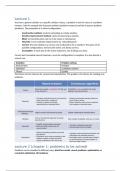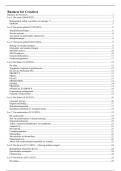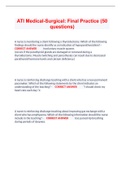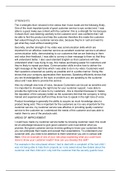College aantekeningen
All lectures summarized
- Instelling
- Vrije Universiteit Amsterdam (VU)
In this document, all lectures are summarized. I used this to study for the exam and make my cheatsheet and I passed the exam with a 9, I hope you will do the same :) Note: using this document, you can easily make your cheatsheet. Make your cheatsheet and use this document to study. Good luck!
[Meer zien]













